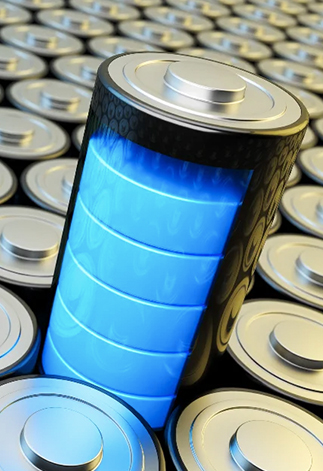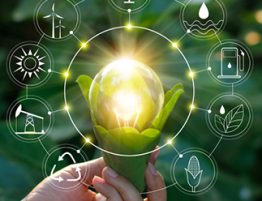
Be it home or office, energy storage solutions are an integral part to maintain the smooth functioning of the appliances we use. The power grids these days are set up in such a way that excess energy is converted and stored for future use. There are numerous benefits that we gain as a consumer of energy with the integration of appropriate energy storage units. Hence, it holds an unambiguous relevance to understanding the kind of technology that works behind such systems.
The core principle of energy storage itself is to procure and channelize energy in an efficient manner so that we don’t waste any. With the rising need to embrace sustainable development, energy storage technologies (ESTs) have also gained attention and momentum. To deal with the surging energy crisis, it’s crucial to categorize the various types of ESTs available today in the market.
The biggest advantage of incorporating ESTs is that you will rely mostly on renewable sources of energy. Despite the differences in their features, ESTs have the common objective to ensure proper energy management. Most developed nations are meticulously trying to expand the storage capacities of energy storage units by 15-25%. All of these efforts are put together to strike a remarkable balance between the demand and supply of power. So, let’s take a quick look at the types of ESTs and the factors that define an energy storage technology below.
What Are The Metrics To Evaluate An Energy Storage Technology?
Just like any other product or service, energy storage also has a certain set of requirements that needs to be satisfied. However, this doesn’t mean there are hard and fast rules to determine the best energy storage technology ever. Based on your needs and level of flexibility, you can choose the best suiting option of ESTs to match your energy management goals. And, here’s a sneak-peak into the various metrics that need to be evaluated before deciding on the type of EST. Besides these, there may be more specifications when it comes to each technology. Those should also be included while designing the apt energy storage unit.
- Storage capacity capability – This is the most crucial parameter to consider. This shows the amount of energy that can be stored in the system after it’s charged. Energy storage units with varying storage capacities are necessary for diverse small and large-scale purposes.
- Scalability – Just like sustainability has a major role in the case of ESTs, scalable technology is often preferred. This offers certain flexibility in installation, overcoming the constraints of geographical or physical limits.
- Cost of the storage – There could be various costs incurred upon installing an energy storage system. Broadly, these can be differentiated as investment costs and operational costs. Sometimes, given your location, even the energy source should have to be purchased as well. It’s important to outline your budget before signing up for a particular storage system.
- Durability – This refers to the number of cycles each energy storage unit can last. Most often, more durable energy storage options are preferred to avoid energy loss.
- Efficiency – Whatever storage system you are choosing must be compatible with your power grid. You need to check whether the chosen storage system works in an optimized and harmonized manner to get the best results possible. Highly efficient technology can easily adapt and utilize energy resources.
- Environmental safety – Sustainability is the larger goal that energy storage systems aim for. Even though ESTs can be developed for both conventional and alternative energy sources, it’s always recommended to consider inexhaustible ones. This ensures that the technology is rightfully employed in an environment-friendly way. Besides, a sustainable energy choice reduces the overhead cost in its application.
5 Categories Of Energy Storage Technologies
Energy storage solutions are an incredible mechanism in which we can create power, energy-independent economies. ESTs are capable of eliminating any kinds of variations in the power grid, be it unprecedented or predicted changes. While there are countless storage technologies, the following ones are the top ones that have yielded reasonable results in creating resilient, reliable, durable, and efficient energy storage units.
1. Batteries
Batteries belong to a larger category of electrochemical technology of energy storage. These convert and store energy as electrical energy. Being portable mediums, it can overcome most geographical boundaries and can be placed anywhere and everywhere.
There are many subdivisions under this category such as low batteries, and steady-state batteries. The most common batteries considered for long-term energy storage are Lithium-ion batteries, sodium-sulfur batteries, and lead-acid batteries. Batteries have a long lifecycle and can be used simultaneously for small and large-scale needs. However, the production costs and maintenance can be a bit higher than other ESTs. In addition, supercapacitors also qualify as electrochemical EST with applications at microgrid levels.
2. Pumped hydro-power
Hydroelectric power is another common source of energy. We utilize the power of gravity and the water stored in extensive water reservoirs like dams. Considered more as a utility-level energy system, hydropower was developed for commercial purposes.
Here, there’s an uphill reservoir and a low-lying reservoir between which the water movement is possible. Pumped hydro-power has up to 80% efficiency and offers the largest storage capacity among other ESTs. Yet, the geographical limitations are high as it requires mostly hilly regions. This also indicates that this technology might not be made available to each and every location. Hydroelectric power is strong and lasts long-term but has huge initial investments.
3. Mechanical Energy Storage
In mechanical energy storage, we convert some kind of kinetic energy into electrical energy. Pumped hydro-power can be broadly classified into this section. But, there are more specific subcategories under mechanical ESTs. Compressed air energy storage and flywheel energy storage are some of the prominent ones.
Similar to the case of pumped hydro-power, in compressed air EST, we pump air from a high-pressure reservoir to a low-pressure reservoir. This is a much eco-friendly technique with almost zero carbon footprints. Compressed air storage has additional benefits of high storage capacity, storage capability, and has nearly inexpensive energy costs. Flywheel storage units are more likely to be used for short-term purposes. It also has a negligible environmental impact and lower maintenance costs involved.
4. Thermal Energy Storage
This technology involves converting heat or cold present in a matter into electrical energy. Molten salts or cryogenic material are used for this. The biggest challenge for thermal energy storage is the need for vast areas or conditions under which you can store the material. Sometimes, this may not be a practically or economically feasible procedure to follow for sudden power requirements.
However, solar energy is alternatively treated as a source of thermal energy, and photovoltaic cells and systems are utilized for energy storage. Few other types such as sensible heat storage and latent heat storage are also practiced for long-run needs.
5. Hydrogen Energy Storage
Not just physical matter, but also chemical components can also be used for energy storage. Under chemical energy storage techniques, we explore different exothermic and endothermic reactions which involve the release or absorption of energy due to the breakage of chemical bonds inside substances.
Due to ease of extraction, hydrogen is the most prevalent material for chemical energy storage. This hasn’t evolved much and is still in its initial discovery stages. Although hydrogen is only used as a fuel material, soon it will gain traction because it is a highly renewable energy source and can last for long durations.
Choose The Right Storage System For Your Needs From Arenq
Each energy storage method has its own set of advantages and shortfalls. It should be your knowledge and expertise that is important before finalizing a choice. Besides, be sure to check the availability of a particular energy storage system at your specified locations. Thus, with neat research and compatibility test, you can adopt a reliable and efficient energy storage technology that doesn’t pose any logistical limitations as well. Energy experts at Arenq are always at your service to make resilient energy solutions.




